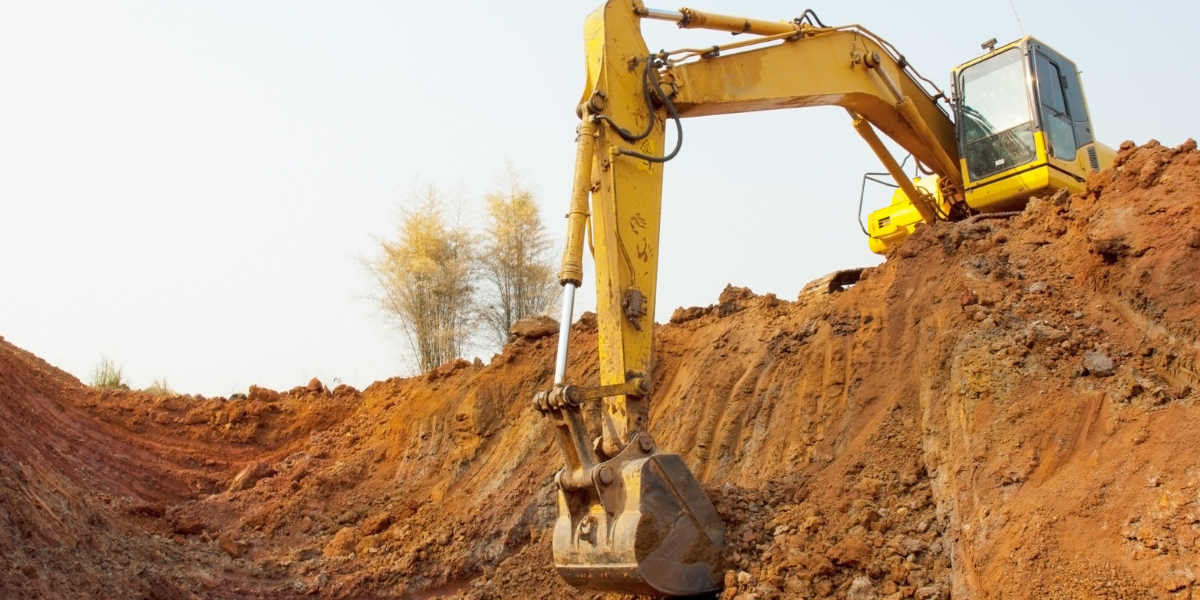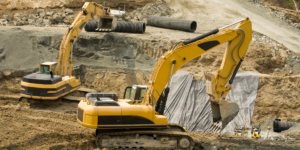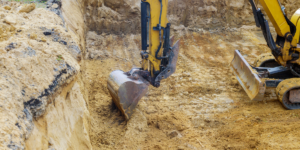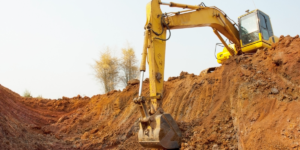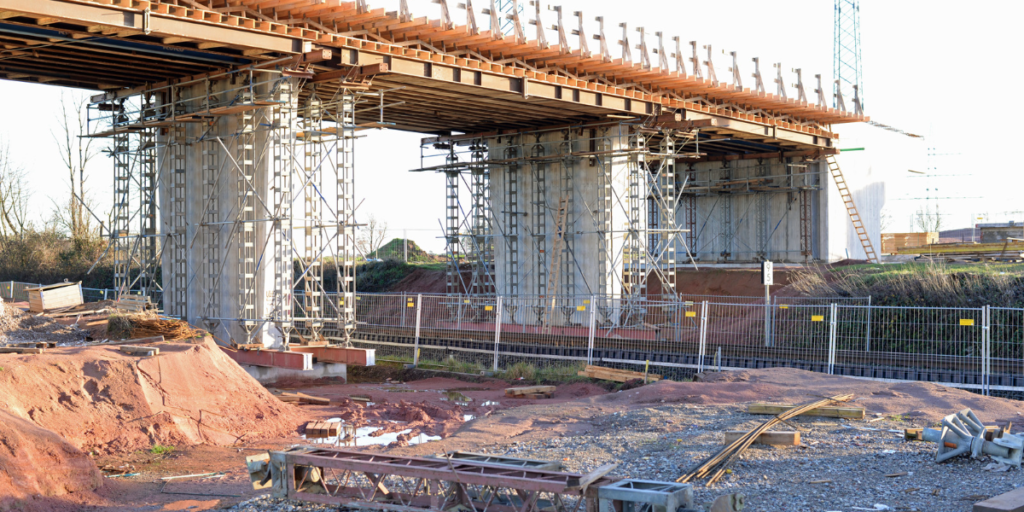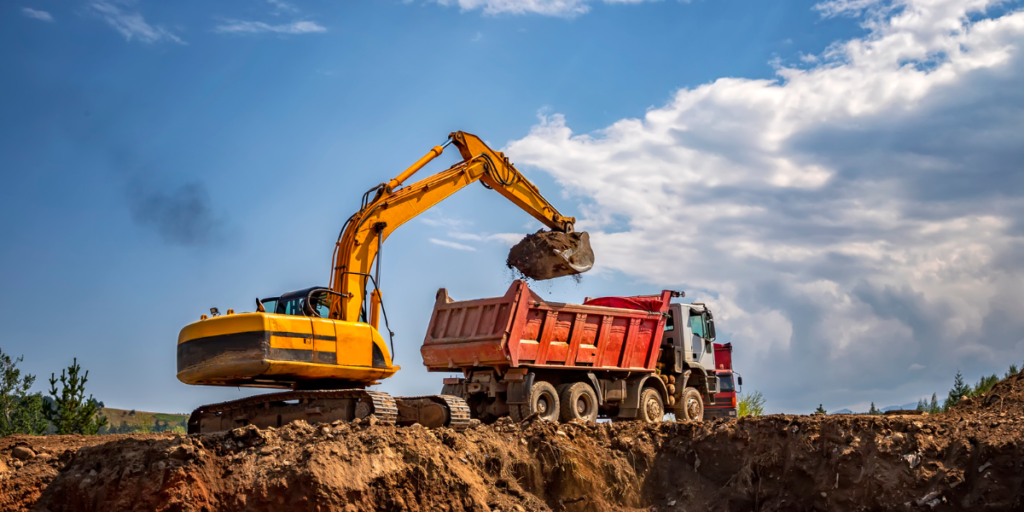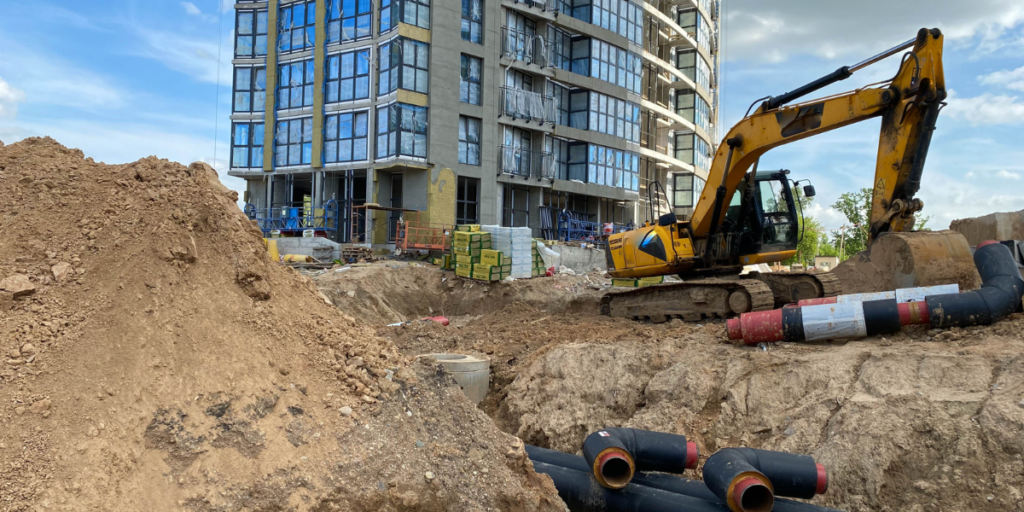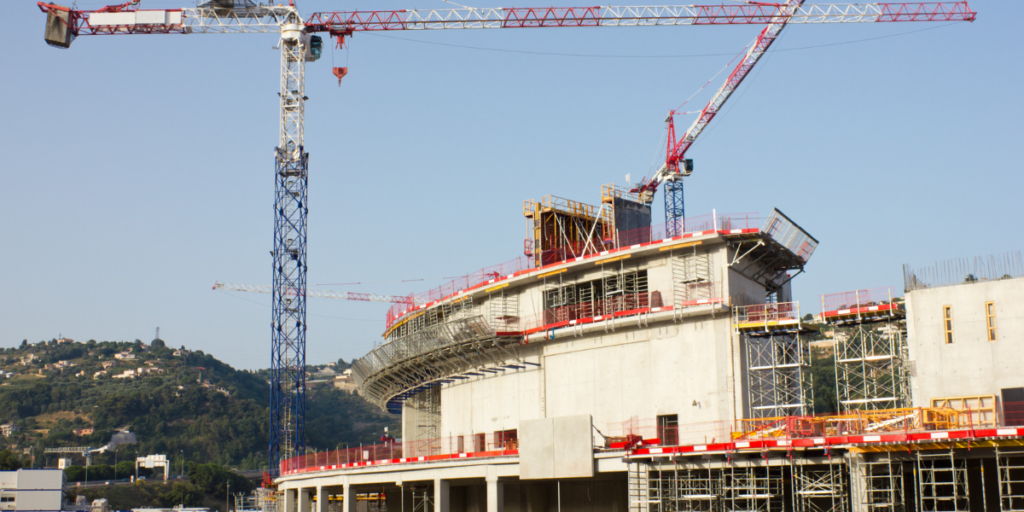1. Introduction
Temporary slope protection, also known as temporary shoring, is a method of supporting and stabilizing the sides of an excavation site during the construction process. It is designed to prevent landslides, soil erosion, and other hazards that can result from the excavation process. Temporary slope protection is typically made up of various materials such as wood, steel, concrete, or geotextile fabrics. It can be installed in various ways depending on the site conditions and the type of excavation being performed.
Temporary slope protection is an essential aspect of excavation projects, as it serves several important purposes:
1.1 Safety.
Excavation can be a dangerous process, as the sides of the excavation site can collapse or slump, causing injury or death to workers. Temporary slope protection helps to prevent these types of accidents by providing stability and support to the excavation site.
1.2 Environmental protection.
Excavation can also have negative impacts on the environment, including soil erosion, sedimentation, and pollution. Temporary slope protection helps to minimize these impacts by preventing soil and debris from washing into nearby waterways or contaminating the surrounding area.
1.3 Project efficiency.
Properly installed temporary slope protection can also help to speed up the excavation process by allowing workers to access the excavation site more safely and efficiently. This can help to reduce project delays and costs.
Overall, temporary slope protection is a vital component of excavation projects that helps to ensure the safety of workers, the protection of the environment, and the efficiency of the construction process.
2. Types of temporary slope protection
2.1 Shoring.
Shoring is a type of temporary slope protection that involves using structural supports, such as beams, columns, or braces, to provide stability to the sides of an excavation site. Shoring can be used in a variety of different soil conditions and depths and is typically constructed using wood, steel, or concrete materials.
There are several different types of shoring systems that can be used in excavation projects, including:
2.1.1 Sheet piling.
Sheet piling involves the use of interlocking panels made of steel or other materials to create a continuous wall around the excavation site.
2.1.2 Soldier piles and lagging.
This type of shoring involves vertical piles driven into the ground, with horizontal lagging boards placed between the piles to support the excavation site.
2.1.3 Struts and braces.
Struts and braces are used to support the excavation site by transferring the load of the soil to a more stable area, such as a nearby building or structure.
2.1.4 Soil anchors.
Soil anchors are long rods or cables that are drilled into the ground and anchored to a stable structure, such as a building or retaining wall. They are used to provide additional stability and support to the sides of an excavation site, particularly in areas with steep or unstable slopes.
2.1.5 Shotcrete.
Shotcrete shoring involves using a high-pressure hose to apply a layer of wet concrete onto the sides of an excavation site. The concrete is then allowed to harden, creating a sturdy and durable wall that helps to support the excavation site. Shotcrete shoring is often used in deep or complex excavation projects, as it can be quickly and easily applied and provide a high stability level.
Both soil anchors and shotcrete shoring can be effective methods of temporary slope protection. Still, they may require specialized equipment and expertise to install, making them more costly and time-consuming than other options. They may also be less suitable for use in areas with sensitive or fragile soils, as the installation process can cause damage to the surrounding environment.
Shoring is an effective method of temporary slope protection for deep or complex excavation projects, as it can be customized to fit the site’s specific needs. However, it can be costly and time-consuming to install and remove, making it less suitable for short-term or shallow excavation projects.
2.2 Berms.
Berms are a type of temporary slope protection that involves the creation of a raised area or mound of soil along the edge of an excavation site. Berms can be used to create a physical barrier between the excavation site and surrounding areas, helping to prevent soil erosion and sedimentation.
Berms can be constructed using various materials, such as soil, sand, gravel, or geotextile fabrics. They can be created using earth-moving equipment or by hand using shovels and other tools.
One of the main advantages of using berms as temporary slope protection is their simplicity and low cost. They can be easily constructed and removed, making them suitable for short-term or shallow excavation projects. However, they may not provide as much stability and support as other types of temporary slope protection and may not be suitable for use in areas with steep or unstable slopes.
2.3 Netting.
Netting is a type of temporary slope protection that involves using mesh or webbing material to create a physical barrier around the edges of an excavation site. Netting can be made from various materials, such as plastic, fibreglass, or steel, and is typically attached to poles, stakes, or other supports to hold it in place.
Netting is often used in excavation projects as a way to prevent soil erosion and sedimentation, as it helps to keep soil and debris from washing away or falling into nearby waterways. It can also protect pedestrians or traffic from falling into the excavation site or prevent animals from entering the site.
One of the main advantages of using netting as temporary slope protection is its flexibility and versatility. It can be easily installed and removed and can be customized to fit the specific needs of the excavation site. However, netting may not provide as much stability and support as other types of temporary slope protection. It may not be suitable for use in areas with steep or unstable slopes. It may also require regular maintenance and cleaning to ensure that it remains in good condition.
2.4 Fencing.
Fencing is another type of temporary slope protection that can be used in excavation projects. Fencing involves using barriers, such as chain links or wooden fencing, to create a physical barrier around the edges of an excavation site.
Fencing is commonly used in excavation projects to prevent access to the site by unauthorized personnel or animals and protect pedestrians or traffic from falling into the excavation site. It can also be used to prevent soil erosion and sedimentation by creating a barrier around the site to keep soil and debris from washing away.
One of the main advantages of using fencing as temporary slope protection is its durability and visibility. Fencing can be easily seen and understood by people and animals, making it an effective way to communicate the boundaries of the excavation site. It is also relatively easy to install and remove and can be customized to fit the site’s specific needs. However, fencing may not provide as much stability and support as other types of temporary slope protection. It may not be suitable for use in areas with steep or unstable slopes.
3. Factors to consider when selecting temporary slope protection
3.1 Site conditions.
Site conditions refer to the excavation site’s physical characteristics, including the soil type and condition, the slope and gradient of the land, the presence of water or other hazards, and the surrounding environment. These factors can significantly impact the selection and installation of temporary slope protection for an excavation project.
Some key considerations when evaluating site conditions for temporary slope protection include:
3.1.1 Soil type and condition.
Different types of soil have different properties and behaviours, which can affect the stability of an excavation site. For example, sandy or gravelly soils may be more prone to erosion, while clay or silt soils may be more prone to slumping or settling.
3.1.2 Slope and gradient.
The slope and gradient of the land around an excavation site can also impact the site’s stability, as well as the type of temporary slope protection required. Steep or unstable slopes may require more robust or specialized temporary slope protection, while gentler slopes may be suitable for simpler solutions.
3.1.3 Water and other hazards.
The presence of water or other hazards, such as underground utilities or structures, can also impact the selection and installation of temporary slope protection. For example, water can erode soil and destabilize an excavation site, while underground utilities may need to be protected or diverted during construction.
3.1.4 Overhead obstacles.
Overhead obstacles are another factor to consider when evaluating site conditions for temporary slope protection in an excavation project. Overhead obstacles refer to structures or objects above or near the excavation site, such as overhead power lines, bridges, or trees.
Overhead obstacles can pose a number of potential hazards to excavation projects, including the risk of electrical shock, collapse, or damage to the overhead structure. They can also impact the selection and installation of temporary slope protection, as some methods may not be suitable for use in close proximity to overhead obstacles.
To address the potential hazards of overhead obstacles, it is important to carefully assess the location and height of the obstacles in relation to the excavation site. This may involve obtaining clearance or permission from the owner or operator of the overhead structure or developing a plan to safely work around the obstacle. In some cases, it may be necessary to relocate or remove the overhead obstacle in order to proceed with the excavation project. By carefully managing overhead obstacles, it is possible to ensure workers’ safety and the excavation site’s stability.
3.1.5 Access and egress.
Access and egress to the excavation area are important factors to consider when evaluating site conditions for temporary slope protection. Access refers to the ability to enter and move around the excavation site, while egress refers to the ability to safely exit the site.
Access and egress to the excavation area can be impacted by several factors, including the slope and gradient of the land, the presence of water or other hazards, and the type of temporary slope protection used. For example, if the excavation site is located on a steep slope or has unstable soil, it may be more difficult to safely enter and exit the site. Similarly, if the temporary slope protection is difficult to navigate or climb over, it may create barriers to access and egress.
To ensure safe access and egress to the excavation area, it is important to carefully assess the site conditions and choose the most appropriate temporary slope protection. This may involve installing walkways, ladders, or other means of accessing the site or designing temporary slope protection to allow for easy passage. By providing safe and easy access and egress to the excavation area, it is possible to ensure workers’ safety and the construction process’s efficiency.
3.1.6 Underground utilities.
Underground utilities are another important factor to consider when evaluating site conditions for temporary slope protection in an excavation project. Underground utilities refer to any pipes, cables, or other infrastructure that may be buried beneath the surface of the ground, such as water, sewage, or electrical lines.
The presence of underground utilities can pose a number of potential hazards to excavation projects, including the risk of damage to the utilities, injury to workers, or disruption of service to the surrounding area. Therefore, it is important to carefully assess the location and depth of underground utilities in relation to the excavation site and develop a plan to safely work around or protect the utilities during the construction process.
To evaluate site conditions for underground utilities, it is typically necessary to perform a site survey or locate the utilities using specialized equipment. This can help to identify the location and depth of the utilities, as well as any potential hazards or challenges that may need to be addressed during the excavation process. By carefully managing underground utilities, it is possible to ensure workers’ safety and the excavation site’s stability.
By carefully evaluating site conditions, it is possible to choose the most appropriate and effective temporary slope protection for an excavation project, ensuring the safety and stability of the site.
3.2 Type of excavation.
The type of excavation being performed is an important factor to consider when selecting temporary slope protection. Different types of excavation projects may have different requirements or challenges regarding temporary slope protection, and it is important to choose the most appropriate solution for the site’s specific needs.
Some key considerations when selecting temporary slope protection based on the type of excavation include:
3.2.1 Depth and complexity of the excavation.
Deep or complex excavation projects may require more robust or specialized temporary slope protection, such as shoring or soil anchors, to ensure the stability and safety of the site. Shallow or simple excavation projects may be suitable for simpler solutions, such as berms or netting.
3.2.2 Soil conditions.
The type and condition of the soil at the excavation site can also impact the selection of temporary slope protection. For example, sandy or gravelly soils may be more prone to erosion, while clay or silt soils may be more prone to slumping or settling. The temporary slope protection chosen should be able to effectively manage the specific soil conditions at the site.
By considering the type of excavation being performed, it is possible to choose the most appropriate and effective temporary slope protection for the site’s specific needs.
3.2.3 Duration of excavation.
The duration of the excavation is another important factor to consider when selecting temporary slope protection. The length of time that the excavation is expected to take can impact the selection of temporary slope protection in several ways.
Some key considerations when selecting temporary slope protection based on the duration of the excavation include:
- Durability. Longer-term excavation projects may require more durable or permanent solutions for temporary slope protection, as they will need to withstand the elements and remain in place for an extended period of time. Shorter-term projects may be suitable for simpler or more easily removed solutions.
- Cost. The duration of the excavation can also impact the cost of temporary slope protection. Longer-term projects may require more expensive or complex solutions, such as shoring or soil anchors, which may not be cost-effective for shorter-term projects.
- Maintenance. The length of time that the excavation is expected to take can also affect the amount of maintenance and monitoring that is required for the temporary slope protection. Longer-term projects may require more frequent inspections and repairs, while shorter-term projects may require less maintenance.
Considering the excavation’s duration, it is possible to choose the most appropriate and cost-effective temporary slope protection for the site’s specific needs.
3.2.4 Budget.
Budget is an important factor to consider when selecting temporary slope protection for an excavation project. Temporary slope protection can vary significantly in terms of cost, depending on the solution’s materials, methods, and complexity.
Some key considerations when selecting temporary slope protection based on a budget include:
- Initial cost. The initial cost of temporary slope protection can vary widely depending on the materials, equipment, and labour required. It is important to carefully assess the budget for the project and choose a solution that is within the allocated budget.
- Ongoing costs. The ongoing costs of temporary slope protection should also be considered, including the costs of maintenance, repairs, and replacement of materials. These costs can add up over time, particularly for longer-term projects, so it is important to choose a cost-effective and durable solution.
- Cost-benefit analysis. It is important to carefully weigh the costs of temporary slope protection against the benefits it provides, including the safety of workers, the stability of the excavation site, and the protection of the surrounding environment. In some cases, investing in a more expensive or complex solution may be justified if it provides greater benefits or reduces overall project costs.
By considering the budget for the project, it is possible to choose the most appropriate and cost-effective temporary slope protection for the site’s specific needs.
4. Installation of temporary slope protection
The steps involved in installing temporary slope protection will vary depending on the specific type of solution being used, as well as the site conditions and requirements of the excavation project. However, there are some general steps that are commonly followed when installing temporary slope protection:
4.1 Planning and design.
The first step in installing temporary slope protection is to develop a plan for the installation process. This may involve assessing the site conditions, selecting the most appropriate solution, and determining the required materials, equipment, and labour.
4.2 Preparation.
Once a plan has been developed, the next step is to prepare the site for the installation of temporary slope protection. This may involve clearing debris or vegetation, grading the ground, or installing access or egress points.
4.3 Installation.
The installation of temporary slope protection will depend on the specific type of solution used. For example, shoring may involve driving piles into the ground, installing beams or braces, and attaching lagging boards. Netting may involve attaching mesh or webbing material to poles or stakes or attaching it to existing structures.
4.4 Testing.
After the temporary slope protection has been installed, it is important to test it to ensure it is properly functioning and provides the necessary stability and support to the excavation site. This may involve conducting load tests, inspections, or other methods of assessment.
5. Maintenance: Ongoing maintenance and monitoring of temporary slope protection.
Proper temporary slope protection installation is essential for an excavation site’s safety and stability. Proper installation helps to ensure that the temporary slope protection is effective in preventing soil erosion, sedimentation, and other environmental impacts, as well as in protecting workers and equipment from accidents or injuries.
In addition to the safety benefits, the proper installation of temporary slope protection can also help to improve the efficiency and productivity of the excavation process. By allowing workers to access the site more safely and easily, temporary slope protection can help reduce project delays and costs and may even help reduce the excavation’s overall impact on the surrounding area.
Overall, proper installation of temporary slope protection is a vital aspect of excavation projects. It is important to ensure that the installation process is carried out correctly and according to industry standards and best practices. This may involve working with experienced professionals, such as engineers or contractors, to design and install the temporary slope protection and regularly inspecting and maintaining the materials to ensure their effectiveness and durability. Taking these steps makes it possible to ensure the excavation site’s safety, stability, and efficiency.
6. Maintenance and monitoring of temporary slope protection
6.1 Regular inspections.
Regular inspection of installed temporary slope protection is an important part of maintaining the safety and stability of an excavation site. The inspection involves checking the condition and integrity of the temporary slope protection materials and identifying and addressing any issues or problems that may arise.
Regular inspection of temporary slope protection can help ensure that the materials are in good condition and can effectively protect the excavation site from soil erosion, sedimentation, and other environmental impacts. It can also help to identify and address any problems with the materials, such as wear and tear, damage, or failure, which may affect their effectiveness and durability.
Inspection of temporary slope protection should be carried out by experienced professionals, such as engineers or contractors, who are trained to identify and assess potential problems and hazards. Inspections should be conducted at regular intervals, depending on the specific needs and conditions of the excavation site. They should include a thorough examination of the materials and their supporting structures, as well as an assessment of the surrounding environment and any potential hazards.
Overall, regular inspection of temporary slope protection is essential to maintaining the safety and stability of an excavation site, and it is important to ensure that inspections are carried out according to industry standards and best practices. By conducting regular inspections, it is possible to identify and address any issues or problems with the temporary slope protection, helping to ensure workers’ safety and the excavation process’s efficiency.
6.2 Repair and replacement of damaged materials.
Repair and replacement of damaged materials is an important aspect of maintaining the effectiveness and durability of temporary slope protection in an excavation project. Damage to temporary slope protection materials can occur due to various factors, including weather, erosion, wear and tear, or accidents.
When damage to temporary slope protection materials is identified, it is important to assess the damage’s extent and severity and determine whether repair or replacement is necessary. In some cases, minor damage or wear and tear may be able to be repaired by patching or repairing the damaged materials. However, more significant damage or failure of the materials may require replacement with new materials.
Repair and replacement of damaged temporary slope protection materials should be carried out by experienced professionals, such as engineers or contractors, who are trained to identify and assess the damage and to determine the most appropriate course of action. Repairs and replacements should be carried out according to industry standards and best practices and should be carefully planned and coordinated to minimize disruption to the excavation site and the surrounding area.
Overall, repairing and replacing damaged temporary slope protection materials is an important aspect of maintaining the safety and stability of an excavation site, and it is important to ensure that these processes are carried out correctly and efficiently. By addressing damaged materials in a timely and effective manner, it is possible to maintain the effectiveness and durability of the temporary slope protection, helping to ensure the safety of workers and the efficiency of the excavation process.
7. Conclusion
Temporary slope protection is a crucial aspect of excavation projects. Proper selection, installation, and maintenance of temporary slope protection ensure workers’ safety and the excavation site’s stability.
From a cost-estimating perspective, the cost of temporary slope protection can vary significantly depending on the materials, methods, and complexity of the solution, as well as the duration and scope of the project. It is important to consider the items covered in this lesson’s installation, maintenance, and repair sections to ensure the proper budget is allocated.

